Products
Products Overview

When it comes to vision care products, they are not all created equally! Across the eye care industry there is a large variance in quality and craftsmanship. We take pride in using a wide-range of top quality materials with great product support to provide you with the excellent eye care products. We meet regularly with manufacturer's representatives to make sure that we have the a great selection. Our value is in knowing what is available and what best meets your needs.
When considering where to purchase your eyeglasses, contact lenses, and sunwear, remember to consider the following. . .
Total Eye Health - Our office is part of this community. We want you to have sharp vision and great comfort with your glasses and contact lenses. The health of your eyes is our major concern. That is why we stand behind our products and services with great warranties, and a professional and well-educated team. Different prescriptions require certain frame styles and lens treatments in order for your glasses to perform well and look great. Our trained opticians can guide you through this process. Our dispensary has hundreds of frames from which to choose, including a large selection of children's frames. We can help you find the size, shape, and color of frame that is perfect for all family members. When it comes to contact lenses, we offer a full spectrum of products. Even if you have been told before that you cannot wear lenses, we may have a solution that is right for you.
Competitive Pricing - At Eye Doctors of Madison we offer competitive pricing, affordable eyewear packages, and multiple-pair savings. You are also welcome to take advantage of manufacturer rebate programs and special promotions through our office. Be sure to ask about our convenient contact lens direct shipping program.
Convenience - Your Eye Doctors of Madison offers a wide selection of products in our office as well as through custom orders. We use great quality materials and will courteously recommend eyewear and contact lenses that fit your lifestyle and fashion - all within your budget. Plus, you get to try on your frames before ordering--instead of just ordering online and hoping they work for your face and your prescription!
Lenses & Coatings
Contacts & Solutions
Sport & Sunwear
Bifocal Lenses
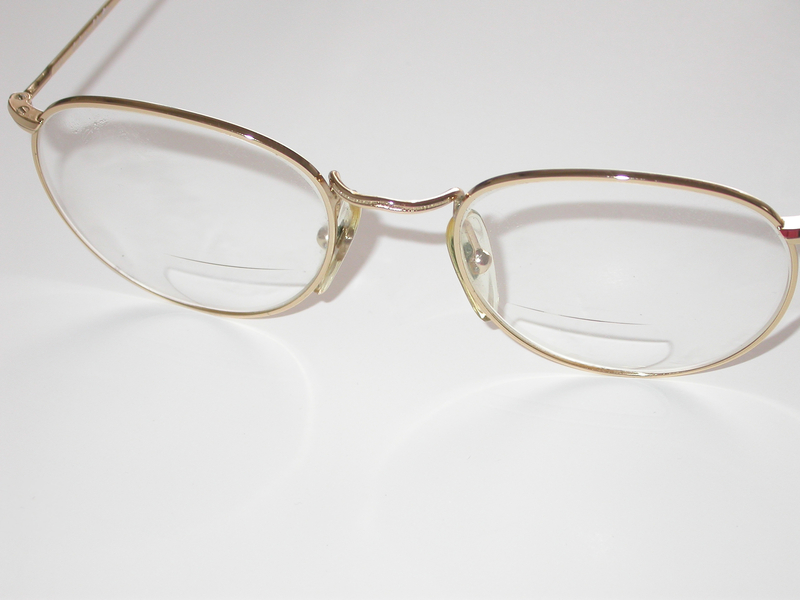
For many people, different lenses are needed for seeing at different distances. Bifocal lenses allow the wearer to look through two areas of the lens. One area focuses on distant objects. The other is used for reading. A little-known fact is that bifocals were invented by Benjamin Franklin, and his style of bifocals are still available today.
Most of the time the “reading” area is smaller, shaped like a sideways “D”, and found in the lower hemisphere of the lens. These bifocals are called line bifocals or flat-tops. If you are focusing on distant objects, you look through the top half of the lenses. To read a book, magazine, or newspaper, you look through the “reading” area. The Franklin style lenses are less common, and are split horizontally down the middle of each lens. One thing that is difficult about using bifocals is dealing with the line between the two vision areas. Fortunately, recent technologies have developed a new type of lens, called the no-line, or progressive, lens.
Progressive Lenses
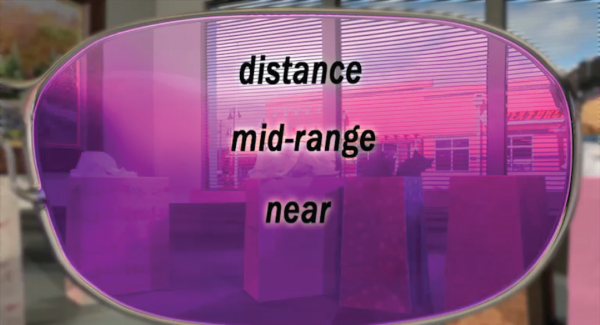
One of the main problems with bifocal and trifocal lenses is the issue of eye fatigue. It can be difficult to switch from one focusing power to another. Your eyes can tire, which can even lead to a headache, sore neck and sore back.
A variation of bifocals and trifocals is the no-line lens or progressive lens. No-lines provide a smooth transition from focusing on nearby to distant objects because they do not have a distinct line separating the focusing powers. Instead, a gradual change in power allows the wearer to focus on objects at all distances. Distant objects are viewed through the upper portion of the lens, while near objects are viewed through the middle or lower portion of the lens. These are also great for computer users.
Trifocal Lenses
Bifocals allow the wearer to read through one area of the lens, and to focus on distant objects through another area of the lens. As the eyes age, though, a stronger prescription is often needed to read. This would be fine, but the stronger prescription that allows for reading makes it difficult to focus on objects at intermediate distances, such as grocery items on a shelf or your speedometer. Thus, trifocals are necessary for a third prescription for intermediate focusing.
Trifocals, also known as line trifocals, feature three areas of focusing power, each separated from the other by a distinct line. The three windows allow for focusing on distant objects, intermediately distanced objects, and for reading. The downside of trifocals is dealing with the lines between the different focusing powers. Fortunately, recent advances in technology have led to developments in no-line, or progressive lenses.
High Index Lenses
Previous to the last few years, the only materials available for use as lenses were glass and a hard resin called CR-39. But recently, high index lenses have become available. High index materials are named because they have a higher index of light refraction. Basically, they can do the same job that glass or CR-39 does, but high index lenses are much thinner and lighter. With high index lenses, you can avoid having “soda bottle” lenses.
When learning about high index lenses, you may hear many unfamiliar numbers and terms. Here are a few things to remember.
Polycarbonate
The first and still the most popular high index plastic is polycarbonate. Polycarbonate was originally developed for fighter jet cockpits. It is very strong, very light, and resistant to scratches and breaking. Most sports lenses are made of polycarbonate.
Mid-Index
Other high index materials are classified by numbers. The higher the number, the thinner and lighter the lens. The lower numbers are classified as mid-index lenses. Mid-index lenses, such as 1.54, 1.56, and 1.57, are thinner than glass, and nearly as strong as CR-39.
High-Index
High index lense are much thinner than regular glass or plastic. Talk with your doctor to decide which high index lens is right for you.
Anti-Reflective Coating
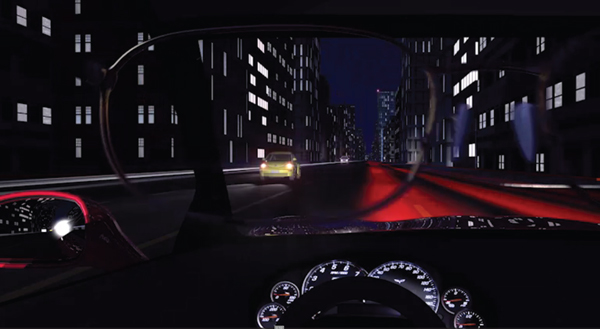
Normal eyewear often creates glare, reflections, and “ghost images.” Now all that can be eliminated with an anti-reflective coating.
What we see is a result of light being sensed by our eyes. With normal glasses, much of the light reflects off the lenses. This produces glare. It also reduces the wearer’s visual acuity. In other words, the light reflection is both a cosmetic and visual problem.
Anti-reflective coatings increase light transmission through the lenses to 99.5 percent. They make it easier to see and easier for others to see you. These coatings are especially useful for those viewing computer screens and driving at night.
Polarized Lenses
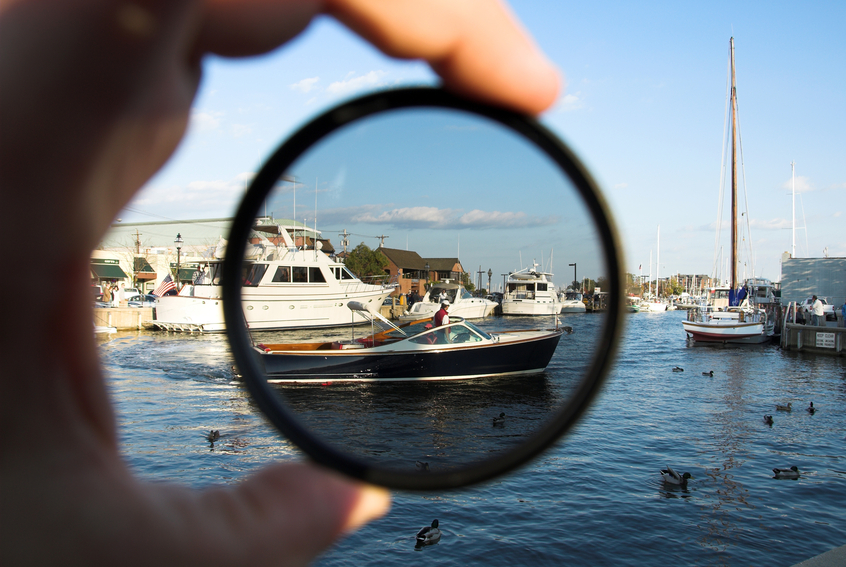
Glare from wet roads, light reflecting off other vehicles, and glare from your own windshield can be annoying and dangerous. To eliminate this glare, we offer polarized lenses. Polarized lenses eliminate the majority of glare, reducing eye strain and increasing visibility. Polarized lenses are the most effective means to reduce glare.
Most glare comes from horizontal surfaces, so the light is “horizontally polarized.” Polarized lenses feature vertically-oriented “polarizers.” These polarizers block the horizontally-polarized light. The result is a glare-reduced view of the world. Polarized lenses can make a world of difference for any outdoor enthusiast. Fisherman can eliminate the bright reflections from the water and actually see into the water more easily than with other sunglasses, golfers can see the green easier, and joggers and bikers can enjoy reduced glare from the road. In addition, drivers can enjoy the safety and comfort that polarized lenses provide while driving.
Scratch Resistant Coating
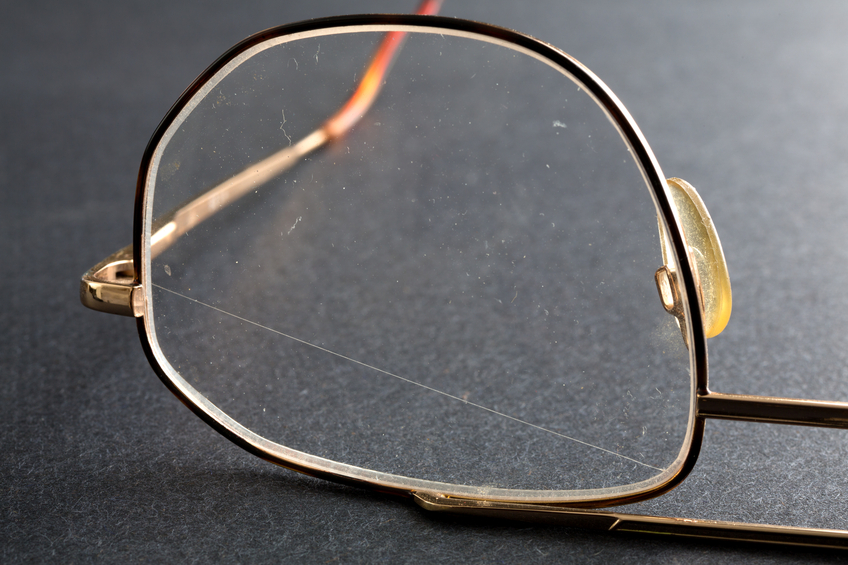
If you have hard resin lenses (CR-39), you should consider getting a scratch-resistant coating. Resins and plastics are more susceptible to scratches than glass. Scratches damage the cosmetic look of the lenses and compromise their performance. With a scratch-resistant coating, you do not have to worry as much about minor scratches on your lenses.
Another advantage of scratch-resistant coatings is that most coatings come with a one-year warranty. They are a great investment to prevent minor scratches. However, it is important to remember that scratch-resistant does not mean scratch-proof. All lenses are susceptible to scratches.
Photochromics
If you have ever felt frustrated at needing both prescription glasses and prescription sunglasses to accommodate an outdoor lifestyle, you should consider photochromic lenses. Photochromic lenses darken when exposed to UV rays. The change is caused by photochromic molecules that are incorporated into the lens or into a coating on the lens. When the wearer goes outside when it's bright, the lenses darken automatically. When the wearer goes back inside, the glasses become clear.
There are a variety of photochromic options available. Depending on what you choose, you can customize the lenses to your needs. Some lenses darken only in direct sunlight, while others darken in little or no direct light. Some are designed to darken while you are in the car to reduce road glare while you are driving. You can even choose the color of the tint. Ask your doctor what options are available.
Cosmetic and Specialty Tints
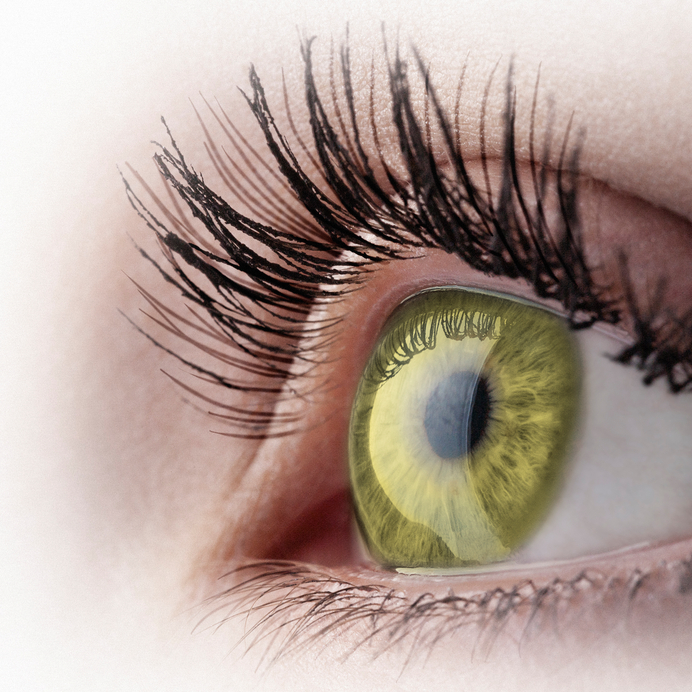
Your glasses do not have to be an eyesore to those around you. Eyeglasses can be a stylish accessory, a part of your personality, or a way for you to be unique. There are a variety of frames to choose from, but you may not know that there are also many ways to improve the appearance of the lenses. Cosmetic tints are now available. These tints offer a variety of colors and shades. You can choose light blue or any other color of the rainbow. Some lenses are clear at the bottom and gradually get more colored towards the top of the lenses. There are many ways to adjust your lenses to whatever style suits your personality. Some tints are also functional.
Recently there has been much attention on a condition called Computer Vision Syndrome, or CVS. A special tint for your glasses can reduce eyestrain associated with CVS.
Specialty Lenses
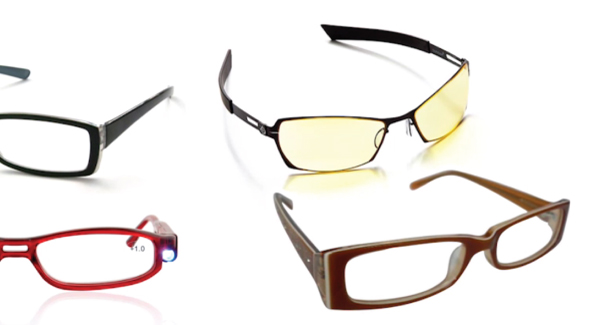
We all have heard the phrase, “Different strokes for different folks.” Well, this also holds true when it comes to selecting glasses. There are different lenses for just about everybody. No matter what your particular need, there is probably a specialty lens designed for you.
For example, a specialty lens that is becoming increasingly common is one designed for computer users. Computer lenses have “windows” designed for viewing your computer screen, documents on your desk, and distant objects. The lenses are designed to reduce Computer Vision Syndrome, or CVS, which is characterized by headaches, eye strain, neck and back aches, dry eyes, blurred vision, and double vision.
Another example is called the double D-segment lens, also known as the double flat-top lens. If you look through most of the lens, you can focus on distant objects. But you can also look through a D-shaped segment near the top of the lens to see nearby overhead objects more clearly. This is very useful if you are involved in work where you are looking at nearby objects above your field of vision, as with carpenters and pilots. The D-shaped segment near the bottom of the lens allows for reading.
Contacts & Solutions
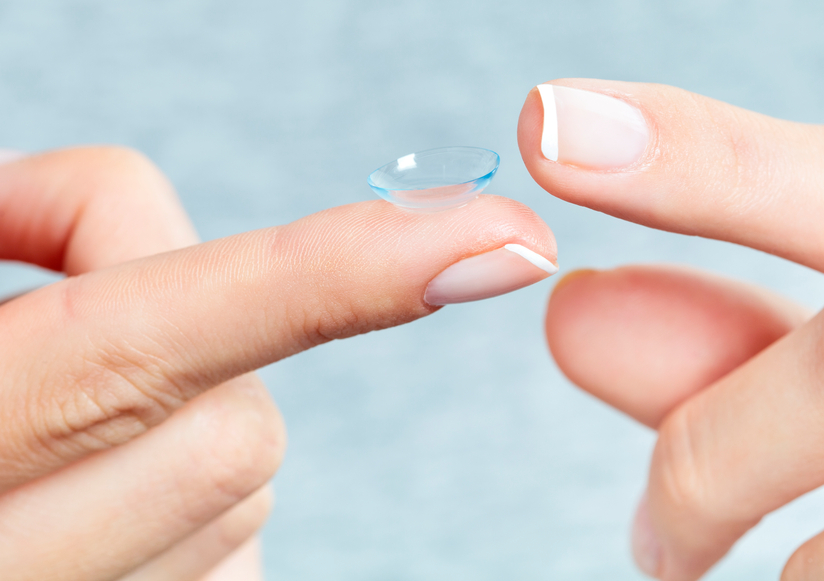
Contact lenses, when used properly, are very convenient, and with the latest advancements in technology, they are extremely comfortable. Most of the time, you will hardly know you are wearing them, though you will certainly notice how clear and accurate your vision is. Contact lenses are small lenses worn on the surface of the eye, or cornea, to correct vision. Lenses are sometimes worn for cosmetic purposes only. We recommend wearing contact lenses in conjunction with eye glasses. This allows you to best meet your overall lifestyle needs while protecting the integrity of your overall eye health.
We will discuss the option that is best for you. Many patients choose contact lenses for their primary vision correction and glasses as a backup option. Many patients who wear glasses have activities and events where they would rather not wear their glasses and they choose contact lenses for these times.
Contact Lens Types
The types of contact lenses available have exploded in the past few years. There are contact lenses available for almost everyone. Many or our patients were told in the past that they could not wear contacts, or they tried unsuccessfully to wear contact lenses. You owe it to yourself to see what is new. We carry many options, and promise to do our best in selecting contact lenses that you will love wearing. Choose from the following list for a brief look at some of the options available.
Disposable Soft Lenses
Disposable soft lenses are much more popular than conventional soft lenses. These lenses are worn for a period of time and then, of course, thrown away. Disposables may be designed to last for one day or up to a couple weeks. These are perfect for many patients who were told they could not wear contact lenses because of allergies or mild dry eye conditions. They have a low cost per lens and are also popular for athletes and hobbyists who do not necessarily want to wear contact lenses every day.
Soft Colored Contact Lenses
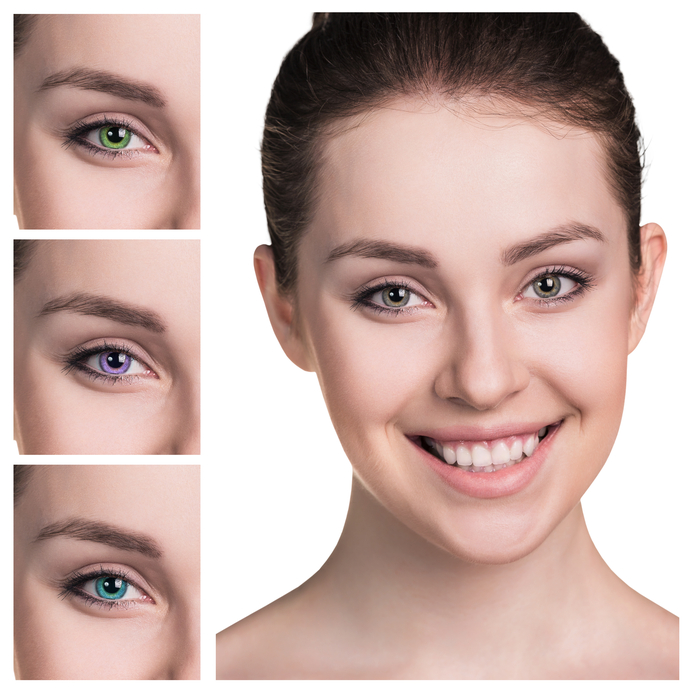
Interested in a new look? Then tinted lenses might be a good fit! These soft lenses are available in conventional, disposable, or frequent replacement types. With tinted soft lenses, you can change or enhance your eye color. Even if you do not need corrective lenses, you can use “plano” colored contacts to change your eye color. It is important to be fitted by an eye doctor for colored contact lenses even if you do not need a prescription; wearing the wrong style can damage your eyeball.
Bifocal Soft Lenses
Recent technology has greatly improved bifocal soft lenses. Many patients past their 40s who need bifocals can now enjoy the comfort and benefits of soft contact lenses. Ask your doctor to see if this would be a good fit for you.
Toric Soft Lenses
Toric lenses are used to correct astigmatism. Astigmatism is a vision condition where an irregularly shaped cornea affects the vision. In the past, the only options for those with astigmatism were either glasses or hard gas permeable contact lenses. But toric lenses, which are lenses with a special shape, now offer an alternative. There are several types of toric lenses to choose from.
Extended Wear Soft Lenses
Extended wear lenses, the result of new technology in lens materials, transmit more oxygen to the cornea of the eye. Some of these lens materials can be worn up to 30 days, day and night, without removal. Extended wear lenses can last one week, two weeks, or one month, depending upon the lens material and your doctor’s recommendations.
Rigid Gas Permeable (RGP) Lenses
As the name implies, these lenses are hard and gas permeable. If you’ve been told you cannot wear soft lenses, RGP lenses are often a great alternative. RGP lenses are available in specialized designs to correct just about any vision disorder.
Solutions

There are a variety of solutions available from many different manufacturers. The important thing to remember is that not every solution is right for every type of contact lens. Some contact lenses require the use of multipurpose solutions, while others require separate solutions for the four steps in contact lens care: disinfecting, cleaning, rinsing, and enzyming. Use only the lens solutions that are recommended by the eye doctor. If you wish to change brands, check with our office first.
Sports Lenses

If you play sports, you should keep two things in mind related to your vision: protection and precision.
Sports lenses protect the wearer’s eyes. Sports such as tennis, baseball, softball, and racquetball may see ball speeds of 90 mph or more. In baseball alone, there are over 500,000 injuries per year! But that is not the most common cause of sports-related eye injuries. Most eye injuries occur in basketball, where an elbow or a finger jabbed into the eye can cause corneal abrasions, fractured bones, retinal detachments, or even blindness. Polycarbonate lenses are more resistant to impact than glass or plastic and offer protection for 90% of eye injuries. Protective eyewear fits well, features a padded bridge, has prescription or non-prescription lenses, and has deep-grooved eyewires to prevent the lens from falling out.
The specialized lenses also optimize your vision. Depending on your sport, certain lenses are more appropriate than others. Dark, UV protection lenses are great for baseball and other outdoor sports. Golfers can benefit from gray-brown colored lenses which make it easier to outline the course. Even if you do not normally wear glasses, non-prescription sports lenses can benefit your performance. Some people think that lenses prevent the wearer from seeing the action, but many sports lenses have anti-fog, glare reduction, and scratch resistant properties. Some are also designed to maximize peripheral vision.
Sunwear

To reduce exposure to UV rays and their effects, we recommend you invest in a set of sunglasses which can provide at least 98% protection from UVA and UVB rays. While cheaper sunglasses can range from poor to excellent UV protection, our sunwear lines provide top quality protection from the sun. We carry a large selection of styles and colors.
Another product to consider is a pair of polarized sunglasses. Polarized lenses block light reflected from surfaces such as a flat road or smooth water. If you are involved in activities such as water sports, skiing, golfing, biking, fishing, and even driving, polarized lenses can be very helpful in reducing glare and giving a clearer view.
Finally, if you have a youngster in the family, it is never too early to fit them with sunglasses. Children under the age of 20 are the most susceptible to the damaging effects of UV light. One concern of parents is that their child will scratch, break, or lose the sunglasses; we are here to help you make the best choice for your child.



